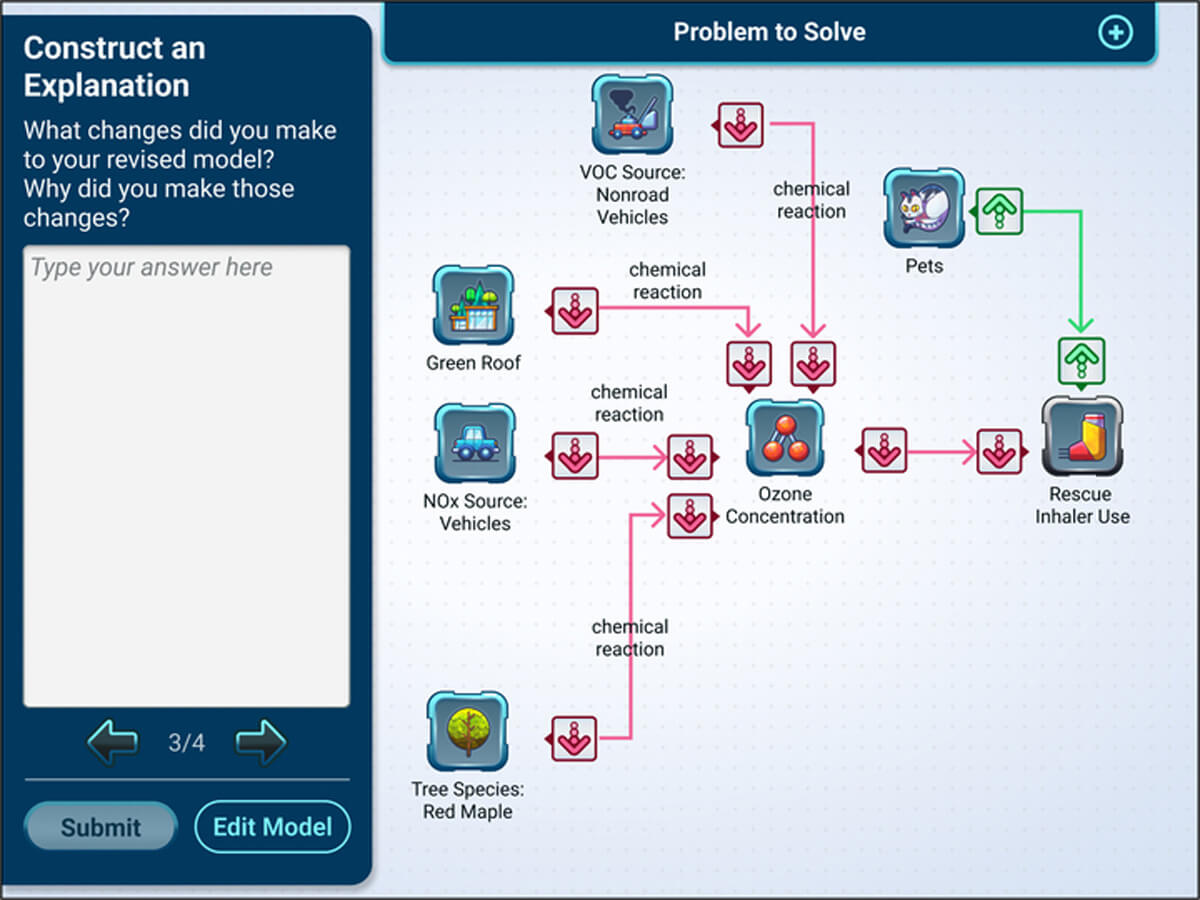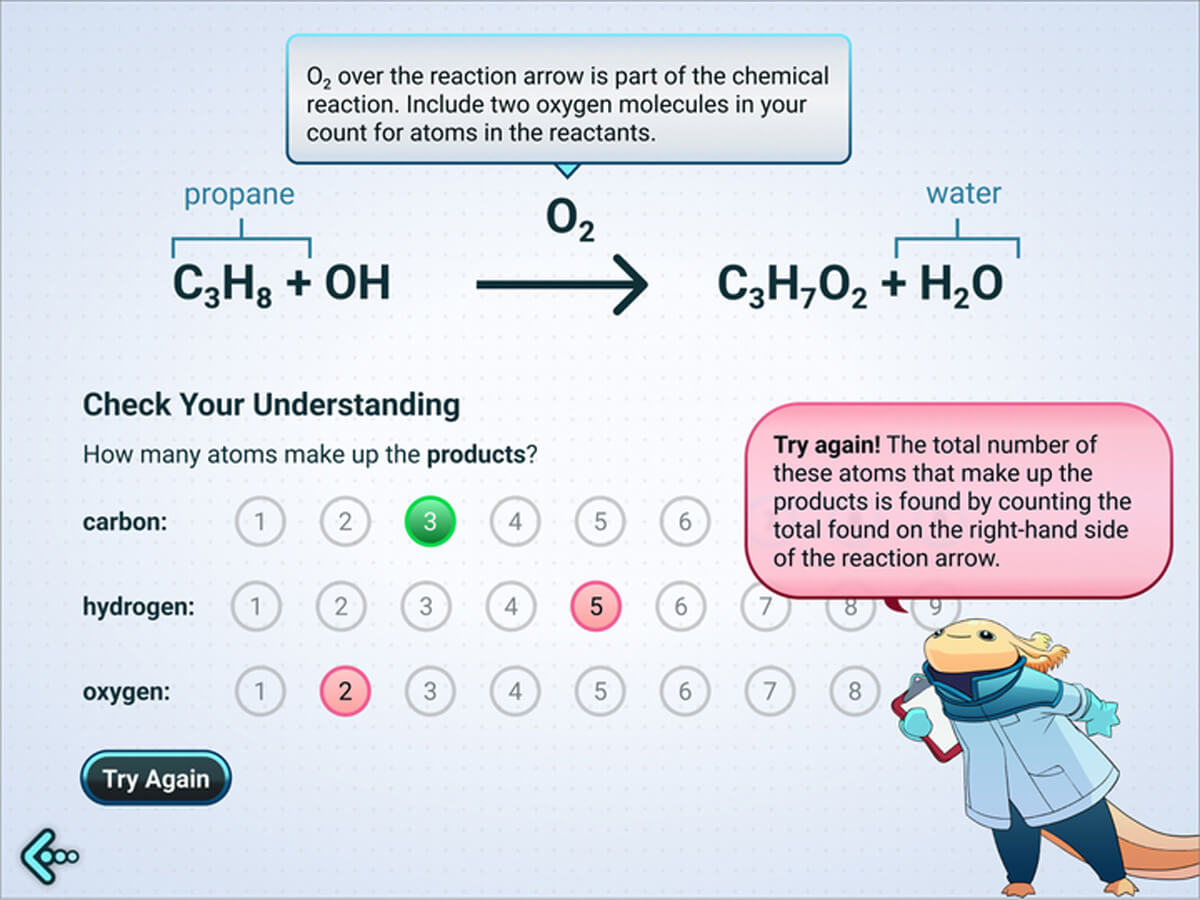Creating an ExploreLearning Gizmos STEM Case

Save a poisoned CIA agent, investigate counterfeit coins, reduce ozone levels? Ask any student, and they’ll likely tell you that’s not on their agenda between lunch and literature. But with ExploreLearning Gizmos STEM Cases, real-life problems come alive with interactive case studies that encourage students to find solutions like STEM professionals.
Brand new content
A respiratory physiologist is concerned about the number of children having asthma attacks in her community. Is something in the environment causing the increased rescue inhaler usage on certain days?
In ExploreLearning’s newest STEM Case, Smelling in the Rain: Designing Solutions to Improve Air Quality, middle school students act as air quality engineers to discover how some air pollutants are released directly from sources while others form through chemical reactions. Students develop system models to test solutions and recommend a plan to help decrease air pollution in a community with a record number of asthma cases.
In the STEM Case, students discover what ozone is, how it’s formed, the relationship between inhaler use and ozone levels, and more. Students analyze and interpret data and later design and test potential outcomes to reduce ozone concentration.

Students test, revise, and reflect on models in the Smelling in the Rain: Ozone STEM Case.
But behind students’ screens, there’s much more at play. Months of planning, research, testing, and development go into each STEM Case, and Smelling in the Rain is no exception. Let’s take a closer look at the teams that brought this STEM Case to life!
Topic selection
Before a storyline or colorful graphics existed, the ExploreLearning team intentionally brainstormed topics that aligned with content standards. Many states recently adopted new standards that integrate science content and practices, and the ExploreLearning team wanted to help teachers address and teach these revised standards in meaningful ways. “Standards come first. They are a big part of the decision-making process,” said Dr. David Kanter, Head of Science Solutions.
In 2023, the team has focused on expanding the already extensive library of middle school STEM Cases. ExploreLearning developers and learning designers looked to the Next Generation Science Standards (NGSS) since most state standards closely resemble the NGSS Science and Engineering Practices, Disciplinary Code Ideas, and Crosscutting Concepts. As the focus landed on a case study related to physical and Earth science, the Smelling in the Rain concept was born. “This STEM Case connects to a real-world problem while aligning with chemical reactions on a middle school level,” said Lauren Chiota, STEM Case Learning Designer.
Designing a learning experience
With a topic solidified, cross-functional teams collaborated to take the STEM Case from concept to reality. Initial outlines turned into play scripts, which later became full-fledged storyboards showcasing each screen a student might interact with. 2D and 3D artists worked to create exciting, realistic images and animations, including a brand-new character, Axl, who offers encouraging feedback and instruction throughout the learning journey. At various stages, Professional Development, Software Development, Content, and Science Solutions teams reviewed the case, and as it advanced, tested it with teachers who provided direct feedback.

Axl offers encouraging feedback as students learn about ozone formation in the STEM Case.
Smelling in the Rain led to other new learning tools that excited the ExploreLearning team, especially as they worked to incorporate a new “model builder” widget. Now, data analysis and testing come to life for students while teachers benefit from auto-scored activities and heatmaps to review learning as it happens. In the STEM Case, students adjust the ozone levels in a city by adding and removing items, such as trees or pollutants. “This new widget leans into the engineering design process. Students both design their solutions and demonstrate their understanding of the problem all in one place. Teachers see what students are thinking as they solve the problem and revise their models. This STEM Case gives students engaging and motivating opportunities to apply the engineering practices in multiple ways,” said Jared Jackson, Director of Production.
For newly released STEM Cases, including Smelling in the Rain, a new feature allows teachers to view and sort the reporting heatmap by “Practices” in addition to skills.
Collaboration is key
Outside experts also dedicated time and valuable input to make the STEM Case the most authentic and exciting experience for students. Dr. Patricia Silveyra, an Indiana University professor and researcher specializing in asthma and ozone exposure, assisted with the STEM Case from its onset.
As an ExploreLearning STEM Pro member, Dr. Silveyra provided expertise to help drive the STEM Case creation. She reviewed initial outlines and storyboards and shared valuable ozone knowledge to help the case study meet desired learning outcomes. “I like that STEM Cases are interactive. They walk students step-by-step into concepts. I like that they incorporate the latest research. They are very comprehensive with real-life examples of what’s going on in our environment and our labs,” said Dr. Silveyra.
 Dr. Patricia Silveyra provides industry expertise to help develop ExploreLearning STEM Cases.
Dr. Patricia Silveyra provides industry expertise to help develop ExploreLearning STEM Cases.
“I’m contributing to STEM education, which is a very important mission for me.” -Dr. Patricia Silveyra
“I would highly recommend the STEM Pro program. It’s a very useful process to see how education is shaped by research. The staff is respectful of your time, and they accommodate to meet your needs. You will help students learn to apply and incorporate knowledge in better ways,” encouraged Dr. Silveyra.
Educators from the ExploreLearning Collab Crew also offered product development insight to shape the student STEM Case experience. “I love Collab Crew because it's very flexible, very rewarding professional development. I'm actually learning about a real-life situation or context that we will provide to the students. I feel like I'm helping ExploreLearning keep STEM Cases amazing, which they are. Also, I feel like I'm learning a ton, so it's a total win,” said Dr. Anna Scott, Upper School Science Department Chair in Athens, Georgia. Read Dr. Scott’s full interview here.
“We’ve worked with various teams over the last year to build a large database of expert teachers. Now, there is a large group of people to turn to for user testing and insight at all steps of the STEM Case creation process.” -Dr. David Kanter, Head of Science Solutions
A moment to celebrate
The official launch of the Smelling in the Rain STEM Case calls for a celebration! Congrats to the many teams and individuals who made this learning experience possible for students.
What’s your favorite part of the STEM Case development process?

“There’s so much complexity involved with each STEM Case. My favorite part of the process is working with cross-functional teams. We get a lot of early input from individuals using and testing portions of the STEM Case.”
-Lauren Chiota, STEM Case Learning Designer

“Brainstorming. I enjoy thinking about the ‘how’ behind what students will be able to do in the STEM Case, from manipulating components to experiencing a new concept.”
-Jared Jackson, Director of Production

“The moment I can email the entire ExploreLearning team that the STEM Case is published. I can breathe a sigh of relief!”
-Dr. David Kanter, Head of Science Solutions
Smelling in the Rain is now available for students in grades 6-8.
Sign up to get the latest updates from ExploreLearning via occasional email.


